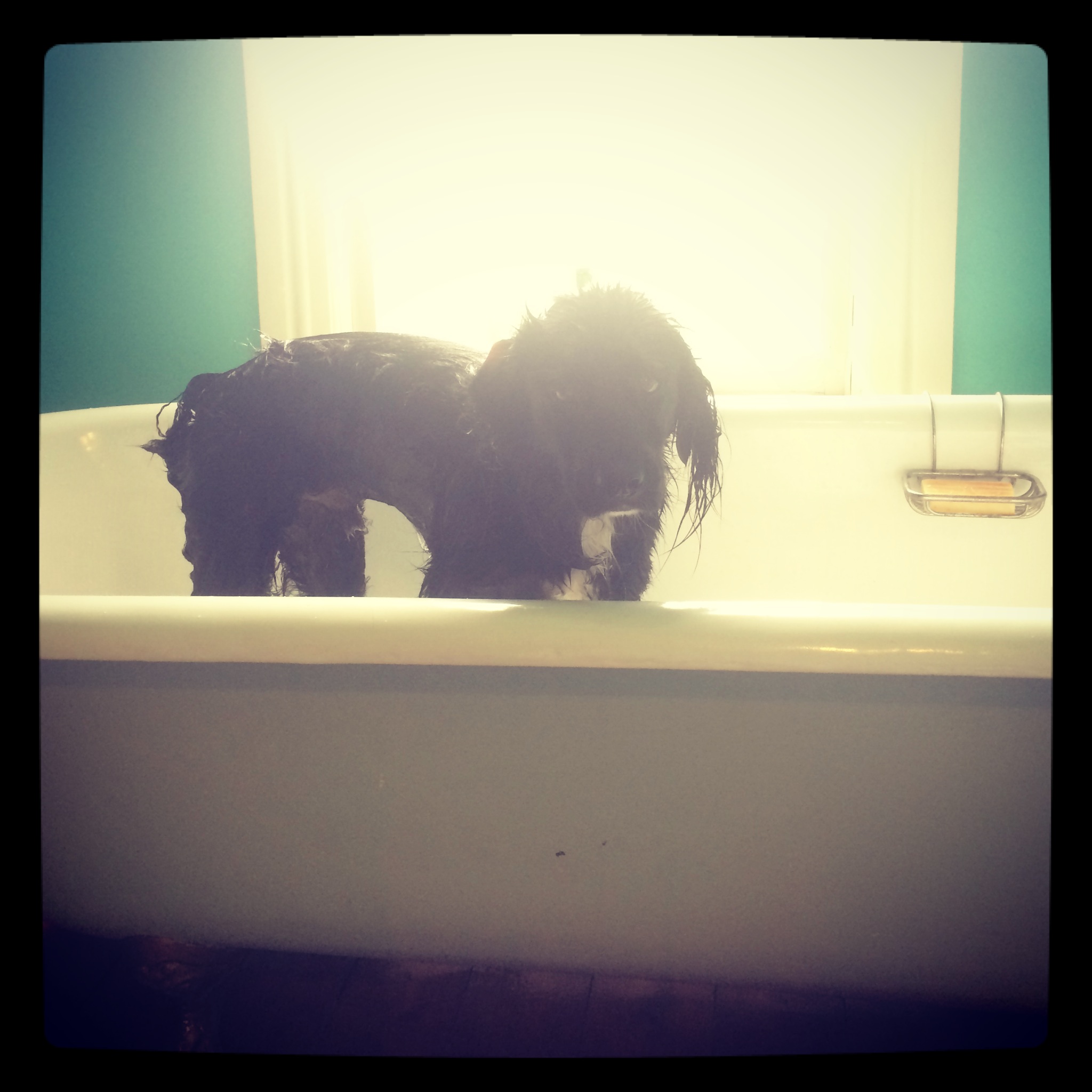Loving a dog means, among other things, making peace with kitsch, if you haven’t already. You don’t have to make goo-goo eyes at every puppy picture you see in a magazine or bake your dog birthday cakes. But if you resist too much the power of the big primary-color emotions that surround the dog, you’re missing the experience. … Dogs are a national religion with a catechism composed by Hallmark, so heresy is necessary. I suspect some people resist the dog culture with such passion precisely to avoid the kitsch, the appalling melodrama: if you give in to it, you’re trapped in a narrative you can’t control. You feel like a dope, buying into it. The emotions around the dog can be as neotenized as the animal itself.
Rather than an end, kitsch can be a starting point. … Much as I’d like to think that kitsch has no purchase in my world, it’s found its way in — and it’s sleeping on my rug.
John Homans in What’s a Dog For?: The Surprising History, Science, Philosophy, and Politics of Man’s Best Friend
He goes by many names, Apollo, Mr. Apollo, Sir Barkalot, Doggly McDog, Doggly McBear, Mr, Mr Moo, The Furry One and on official paper work Apollo Sirius Green.
I have completely given over to the kitsch. I love and adore him. I can’t and don’t want to imagine life without him. I was not looking for a dog to love; I was kind of tricked into it. Such is the power of teenage girls. Paloma has always wanted a dog. Two summers ago she presented me with what seemed like a well-reasoned plan; if I let her foster a puppy for the summer, she could prove to me what a responsible and reliable dog owner she could be. She would give up the puppy at the end of the foster period without fuss. If she proved herself, we could then talk about her getting a forever dog. What could go wrong? Ha!


















